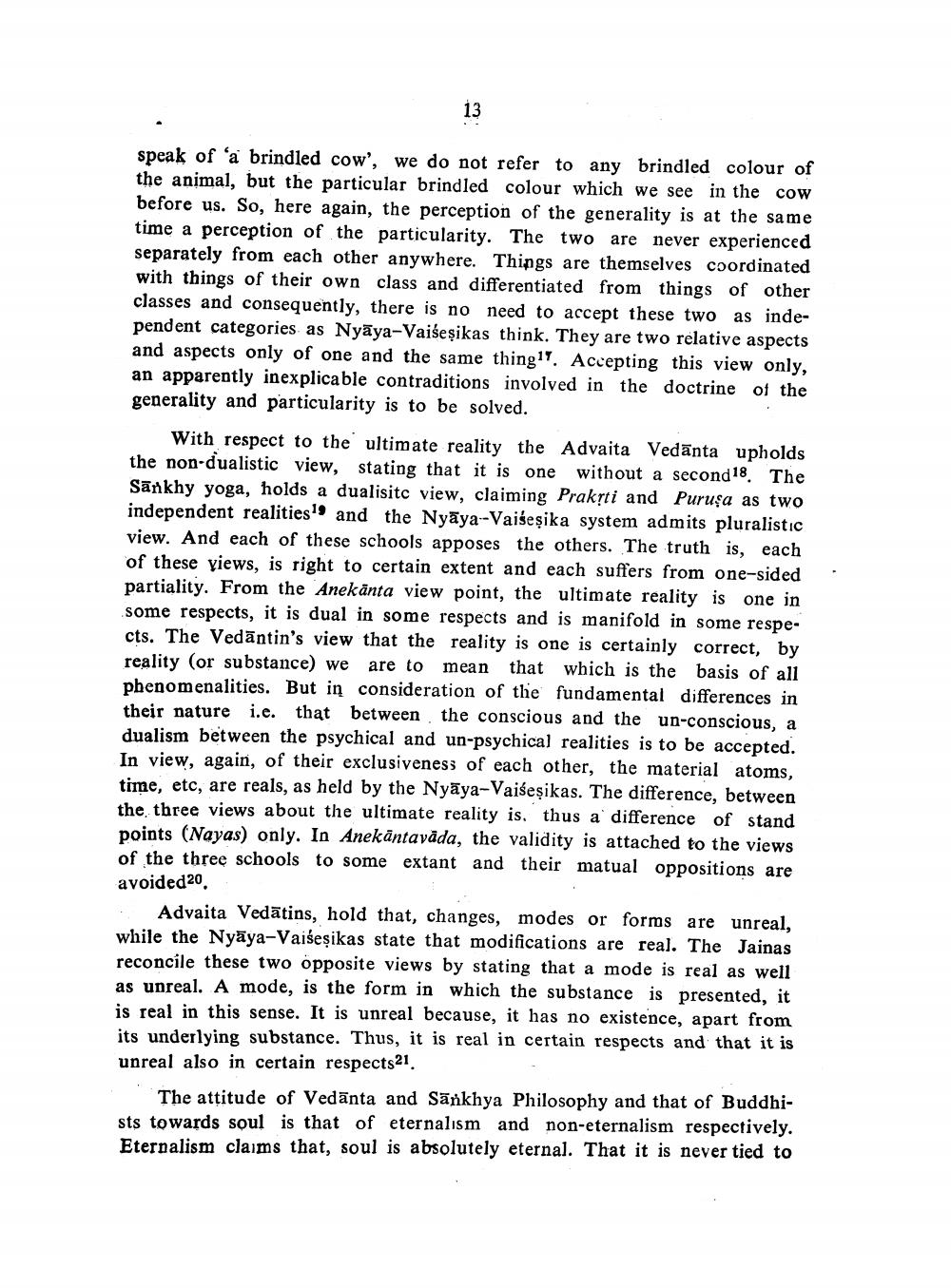________________
speak of 'a brindled cow', we do not refer to any brindled colour of the animal, but the particular brindled colour which we see in the cow before us. So, here again, the perception of the generality is at the same time a perception of the particularity. The two are never experienced separately from each other anywhere. Things are themselves coordinated with things of their own class and differentiated from things of other classes and consequently, there is no need to accept these two as independent categories as Nyāya-Vaišeşikas think. They are two relative aspects and aspects only of one and the same thing?'. Accepting this view only, an apparently inexplicable contraditions involved in the doctrine of the generality and particularity is to be solved.
With respect to the ultimate reality the Advaita Vedānta upholds the non-dualistic view, stating that it is one without a second 18 The Sānkhy yoga, holds a dualisitc view, claiming Praksti and Puruşa as two independent realities") and the Nyāya-Vaiseșika system admits pluralistic view. And each of these schools apposes the others. The truth is, each of these yiews, is right to certain extent and each suffers from one-sided partiality. From the Anekānta view point, the ultimate reality is one in some respects, it is dual in some respects and is manifold in some respects. The Vedāntin's view that the reality is one is certainly correct, by reality (or substance) we are to mean that which is the basis of all phenomenalities. But in consideration of the fundamental differences in their nature i.e. that between the conscious and the un-conscious, a dualism between the psychical and un-psychical realities is to be accepted. In view, again, of their exclusiveness of each other, the material atoms, time, etc, are reals, as held by the Nyāya-Vaišeşikas. The difference, between the three views about the ultimate reality is thus a difference of stand points (Nayas) only. In Anekantavāda, the validity is attached to the views of the three schools to some extant and their matual oppositions are avoided20.
Advaita Vedātins, hold that, changes, modes or forms are unreal, while the Nyāya-Vaišeșikas state that modifications are real. The Jainas reconcile these two opposite views by stating that a mode is real as well as unreal. A mode, is the form in which the substance is presented, it is real in this sense. It is unreal because, it has no existence, apart from its underlying substance. Thus, it is real in certain respects and that it is unreal also in certain respects21
The attitude of Vedānta and Sankhya Philosophy and that of Buddhists towards soul is that of eternalism and non-eternalism respectively. Eternalism claims that, soul is absolutely eternal. That it is never tied to




